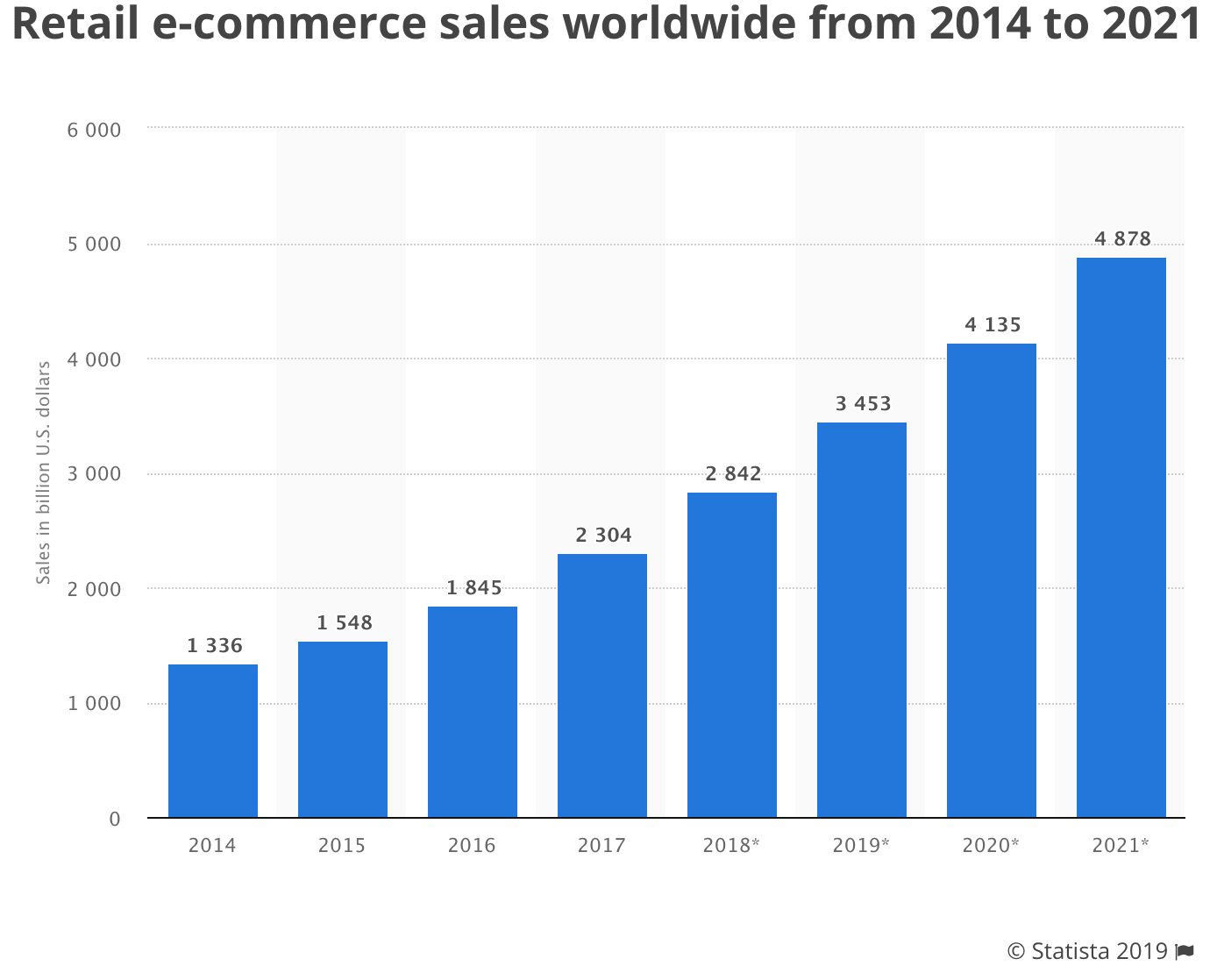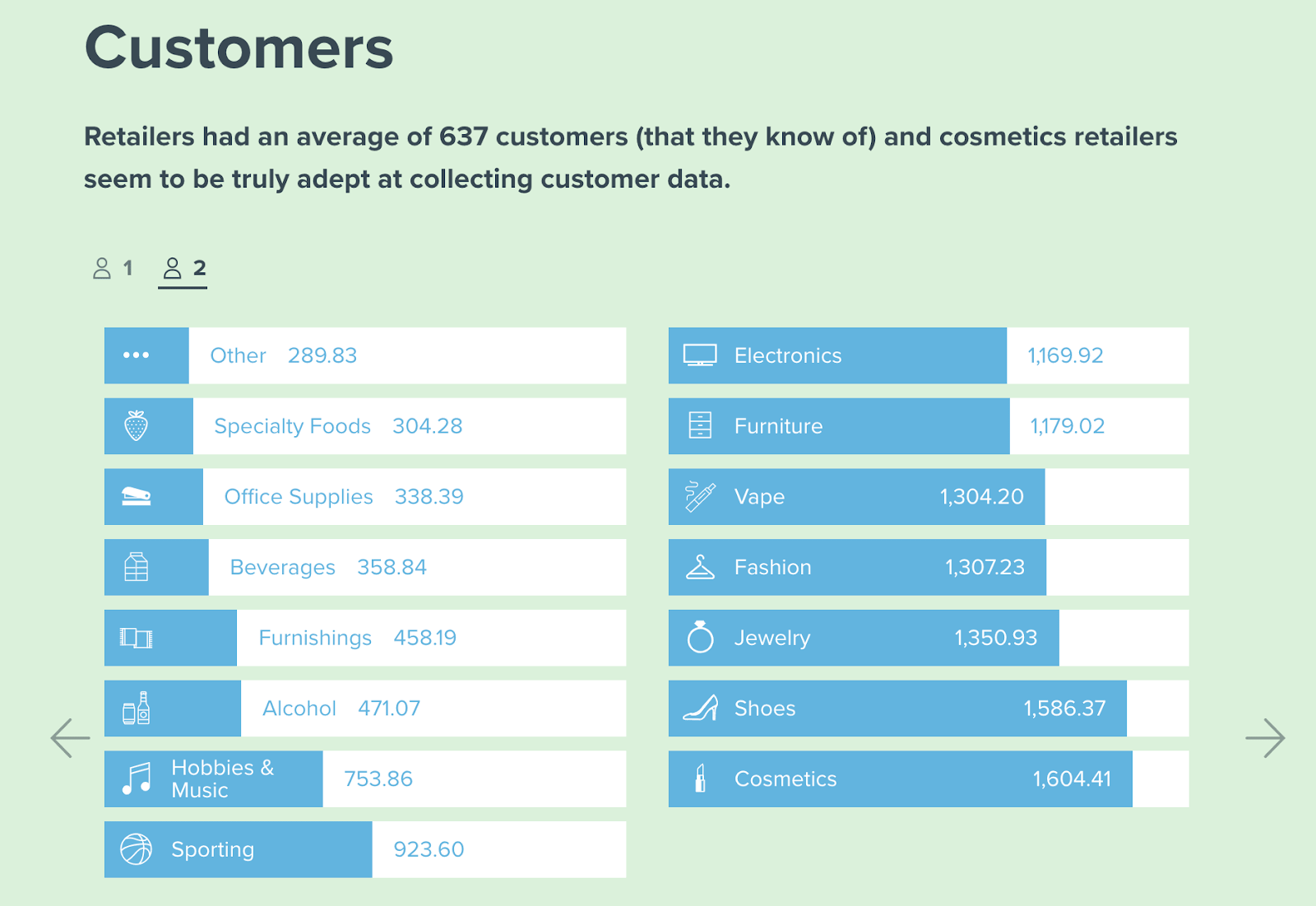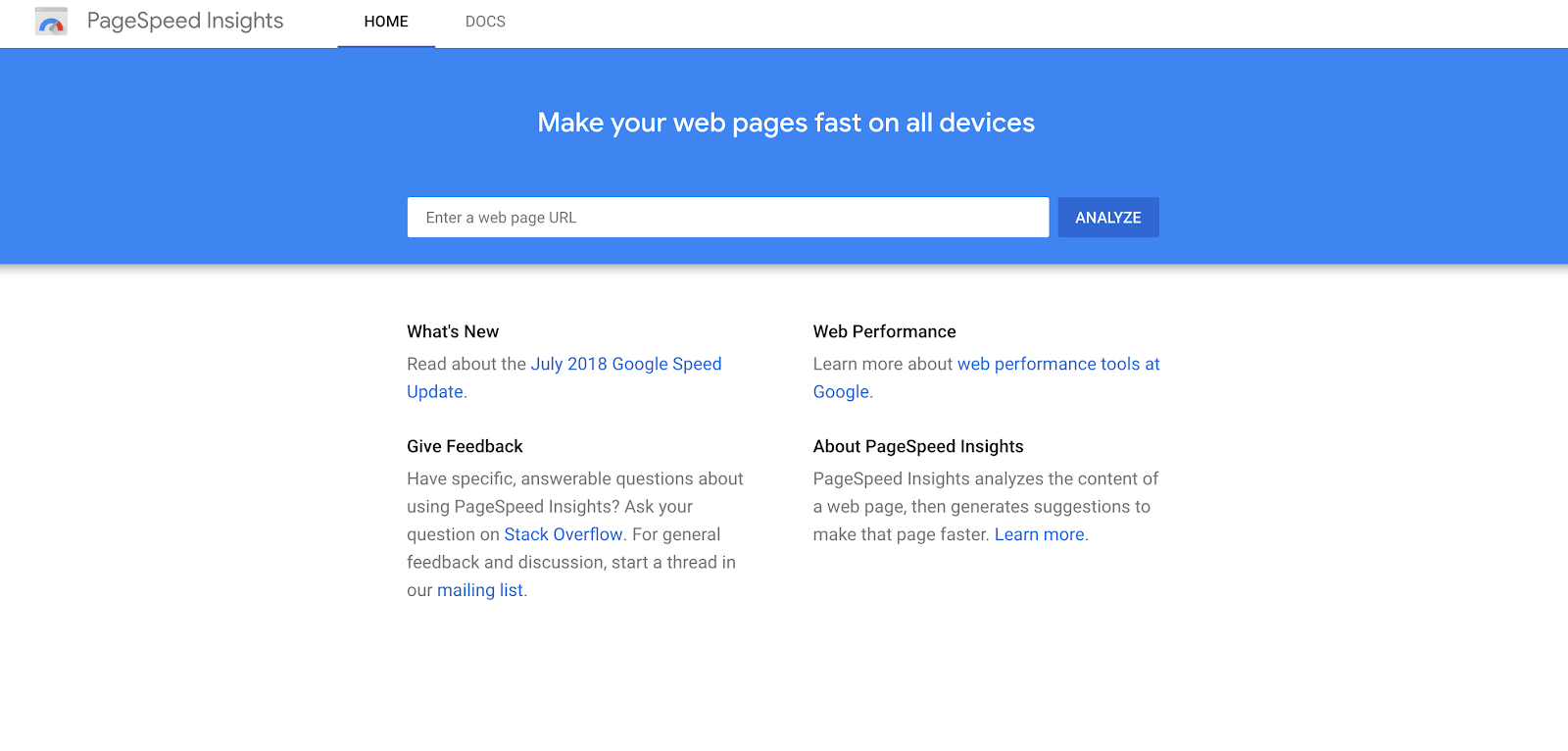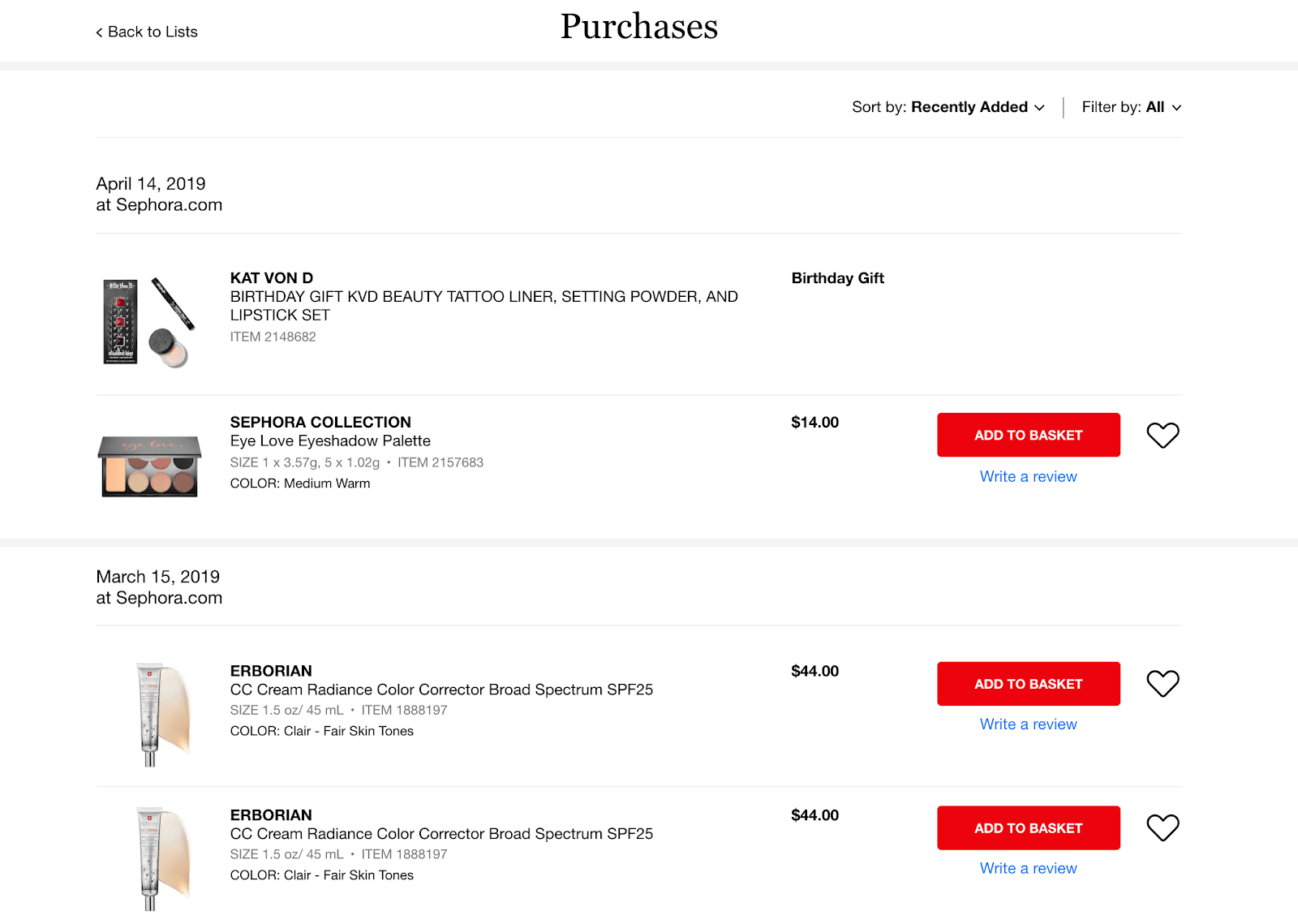Here’s some good news for online merchants: the eCommerce industry has seen tremendous growth over the past few years. According to Statista, online retail sales worldwide have amounted to 2.84 billion in 2018, and are projected to climb to 4.87 billion in 2021.

This can be excellent news for savvy entrepreneurs. Consumers are clearly getting more comfortable making purchases online, and with the right business, you stand to get a cool slice of the ecommerce market!
On the flip side, though, the fact that ecommerce is thriving also means that the market is highly competitive. There are a lot more players in the space, so standing out can be a challenge.
What can you do to effectively reach and engage online shoppers? The answer lies in the customer experience. You need to delight people at every touchpoint and ensure that they have a great time shopping on your site. Doing so will help increase your traffic, engagement, and ultimately, sales.
It sounds obvious, but so many retailers are failing to meet the expectations of modern consumers when it comes to the shopping experience. If your customers aren’t fully engaged with your brand, or if you’re not seeing the sales and conversions that you want, you may want to evaluate your initiatives and make sure you’re not making the following blunders:

1. Being the same as everyone else
Technology has made it extremely easy to set up shop online. Thanks to platforms such as Shopify and BigCommerce, merchants can establish an online store in just a matter of hours or days. This is largely a good thing, because it means that creative and resourceful entrepreneurs have the tools they need to get their businesses off the ground.
That being said, ecommerce’s low barrier to entry also results in higher levels of competition, as it’s all too easy to set up copycat companies. This leads to interchangeable brands that don’t have distinctive business models and shopping experiences. Don’t fall into the same trap! While it’s perfectly normal for different companies to sell the same products, the businesses that end up at the top are the ones that offer unique shopping experiences.
A great example of this can be found in Dollar Shave Club (DSC), the company that pioneered the subscription model in men’s grooming. When DSC first launched, there were already plenty of companies selling razors. But it managed to stand out by:
a) Creating a more convenient business model. DSC revolutionized the process of shopping for razors by introducing subscriptions. Rather than going through the chore of buying razors, customers simply needed to subscribe to DSC by setting up their profile and indicating how often they want razors delivered.
b) Using a fun and quirky voice. Unlike traditional razor companies, DSC adopted a funny and interesting style in the way that it related to customers. It launched hilarious ads and used informal and engaging copy on its website.
Dollar Shave Club did plenty of other things right, but the two factors above contributed the most to the delightful experience they offer to their customers.
See if you can do something similar in your business. Find a way to make your brand stand out. Inject some personality in your copy. Develop processes that make orders and fulfillment much easier for your customers.
When you pull this off successfully, you’ll have customers for life!
2. Impersonal shopper interactions
If you’re not personalizing the customer experience, you’re leaving a lot of money on the table. Multiple studies have shown that consumers appreciate personalized brand interactions, so it’s important for you to customize the experiences of your shoppers based on their needs.
Doing that starts with having the right data. Vend’s retail industry analysis found that retailers have an average of 637 customers in their database, though that number varies according to industry. Retailers that sell cosmetics, shoes, and jewelry have the largest customer databases while those that sell food and beverages are on the lower end.

But regardless of what you sell, you should constantly strive to grow your customer database. Offer incentives that encourage people to share more about themselves and build customer profiles as they interact with your brand.
Be creative. The lingerie retailer ThirdLove, for example, lets its customers take a “Fit Finder” quiz that asks a series of questions to determine the best bra type and size. From there, ThirdLove makes customized recommendations based on each customer’s answers.

Take a leaf out of ThirdLove’s playbook by coming up with an interesting and interactive way to collect shopper data. Once you have their info, put it into good use by creating personalized shopping experiences.
3. Long wait times
The last thing you want to do is keep customers waiting! Studies have shown that a 100-millisecond delay in a page's load time can reduce conversions by 7%. Not only that, but 79% of online shoppers said that they won't buy from a retailer again if they experience poor website performance.
There are a number of steps you can take to improve your site’s load time. Some of the low-hanging fruit include:
Keeping your image sizes small
Not using unnecessary plugins or code
Reducing the number of HTTP requests from your site
Shortening server response time
Implementing browser caches
It’s also important to continuously monitor your site speed and keep up with the latest eCommerce technologies and best practices.
A great tool for doing this is Google PageSpeed Insights, free web software that analyzes your site's speed and performance. Simply enter your URL into the field and Google will score your site and offer recommendations on how to improve.

4. Having a cumbersome shopping experience
Implementing a seamless shopping experience is paramount in today’s landscape, where consumers are constantly moving from one channel to the next. According to Google, 76% of holiday shoppers over the age of 18 use three or more channels.
This shows us that consumers like using different devices and channels throughout their retail journeys, which is why having a fragmented user experience is a big no-no.
A key action step in providing a top-notch experience is making sure that your customers can seamlessly interact with your brand as they switch between channels [e.g. web to mobile]. You can do this by enabling customers to create an account at your store and then saving their shopping activities — like previous purchases and items added to cart — so they can easily “pick up where they left off” when buying from you.
Sephora does this incredibly well. Not only do they save the items you’ve added to your basket - they also keep track of the items you’ve previously bought for a smooth re-ordering process.

5. There’s no human element
Online customers may not be shopping in person, but that doesn’t mean they don’t crave human interaction. While there’s a lot of value in automation and AI, you can’t discount the human element from the shopping experience altogether.
It’s important to give your customers the option to interact with a live person when they want to. Doing so doesn’t just satisfy shoppers’ need for human connection - it also improves your credibility. Online customers can get wary of brands that don’t offer live human support, so by having real people serving your customers, you can put shoppers at ease and drive conversions.
Poopsie’s, a gift shop in Galena, IL, serves as a great example of a retailer putting real people at the heart of its customer experience strategy. Poopies’s has a wide selection of merchandise sold online, but also understands that some customers need help selecting the right products.
So, Poopsie’s came up with a service called Poopsie’s Live, in which customers can speak to a live associate via Skype or Facetime. On the call, the Poopsie’s rep will handpick selections for the shoppers and help them choose the best item depending on their needs.
Final words
Succeeding in ecommerce isn’t just about having the right products and prices. A big component of your success lies in the experiences that shoppers have with your brand. Make the customer experience a priority by adopting a unique approach, getting personal with shoppers, and giving them a smooth and seamless journey.
Good luck!

